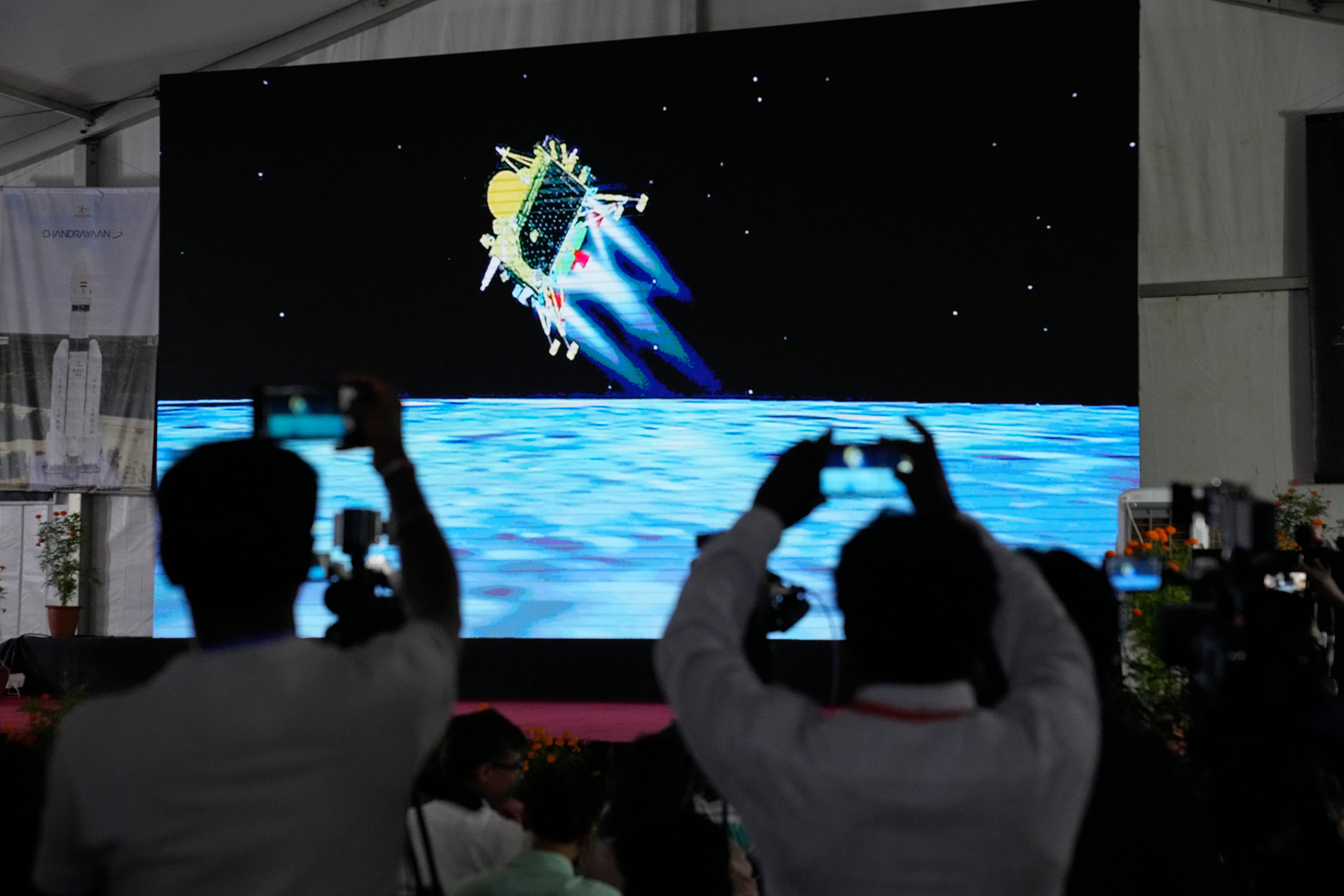Why India’s moon landing is about a lot more than exploring the lunar surface
A growing number of countries are entering a new space race – but the moon might just become a staging post in bigger ambitions to colonise Mars, writes Andrew Griffin


Strewn across the moon – alongside the bibles and golf balls left by there by Apollo astronauts – are the remains of our attempts to get there. The most recent detritus was left when Russia’s Luna-25 lander failed in its mission just a few days ago, but the wreckage joined that of a host of other crashed landers: the vehicle belonging to an Israeli start-up that aimed to achieve the first privately funded moon landing; a UAE-owned lander that crashed earlier this year; and the one that was used in India’s failed attempt in 2019.
And so India’s successful landing of its new probe, Chandrayaan-3, is an exceptional achievement in its own right. The country’s space agency announced today that it had successfully achieved a “soft landing” on the surface of the moon, a historic and unprecedented moment.
It did it on a tiny budget – less than half of what it cost to make the film Interstellar – and in doing so became only the fourth nation to land on the lunar surface, and the first to land near the moon’s south pole. Humanity has been exploring the moon since 1959, when the Russian Luna-2 vehicle was intentionally crashed into its surface, but it has not got much easier.
Successfully landing on the surface of the moon is only half of the point of the Indian mission, which aims to study whether the region around the south pole really does harbour water ice, and, if so, whether it could be used to support life on the moon. And exploring the moon is itself only part of the goal of the new space race.
There are a host of new entrants to the competition: as well as India, China and a number of other countries are joining the US and Russia in ramping up their space exploration programmes. And they have a variety of new targets, too: the moon is just the start.
Indeed, a large part of the excitement surrounding recent missions to the moon is not about the moon itself – it’s about the potential to use it as a stepping stone to more distant parts of the solar system. Future lunar colonies could be a useful way to extract resources from the moon, but could also make it easier to travel to Mars, since having somewhere to stop off would vastly reduce the cost of those missions.
This has been the stated aim of Nasa’s Artemis programme: the space agency doesn’t describe it simply as a way to revisit the moon, but as a project that will enable it to “prepare for missions to Mars”. This is true, but it also creates a marketing problem: going to the moon remains difficult, but it also seems as though it should be easy, given how long it has been since humans first travelled there.
In recent decades, the exploration of space has slowed. Yuri Gagarin became the first human to go into space in 1961; that trip was closer in time to the Wright brothers’ pioneering flight than to the present day. The last person to set foot on the moon, Gene Cernan, did so as part of the Apollo 17 mission in 1972.
In the past few years, though, the interest in space exploration has gained new impetus, driven in large part by investment pouring into private companies. The most obvious among them are US firms such as SpaceX, which will provide the human landing system that will actually allow humans to get back onto the moon. But they are not alone.
One of the reasons for the excitement over India’s success with Chandrayaan-3 is that it is a helpful showpiece for the country’s private space industry, which has been promoted enthusiastically by the country’s prime minister, Narendra Modi. India has begun to offer private space launches, and to look for foreign investment. The low price of the moon mission is a perfect marketing coup for a space industry that has prided itself on offering cost-effective but reliable launches. And marketing will be important as every major country in the world steps up its campaign to become a new hub for space launches.
The privately funded space industry, like its state-run counterpart, is not so much about the moon. A large portion of private-sector work is on projects that are closer to home, such as launching satellites that can provide imaging and internet connectivity to people on the ground. Much of the focus on SpaceX has resulted from its stated ambition to explore the solar system – but most of its activity now involves fairly pedestrian satellite launches, the frequency of which has led to them almost becoming mundane.
For all the excitement and pride around space launches, this is what many of them are: the 21st-century equivalent of freight trains, carrying important if boring bits of equipment up to near-Earth orbit. That, too, is what much of the new space race is about, no matter how thrilling the rhetoric around it might be.
Space exploration is often about a lot more than just exploring space. The original space race was born from the nuclear arms race, and at the time, the national security as well as the reputation of the world’s two biggest powers were at stake. This new space race is largely about soft power and hard money.
But that doesn’t mean that we shouldn’t gasp with wonder when a powerful rocket takes off, or an innovative spacecraft lands on the moon. There are – and we know this now just as well as they did in 1969 – much more horrifying ways to use rockets, and much more damaging places for them to land.
Join our commenting forum
Join thought-provoking conversations, follow other Independent readers and see their replies
Comments


Bookmark popover
Removed from bookmarks